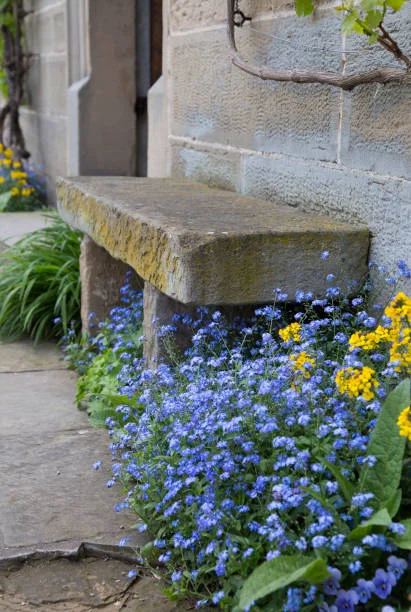Have you ever encountered a tiny blue flower that feels like it’s calling for attention, quietly saying, “Don’t forget me”? That’s the Forget-Me-Not, a small but meaningful bloom that holds a special place in botanical gardens, hearts, and even history. Known for its delicate beauty and strong symbolism of love and remembrance, the Forget-Me-Not is more than just a pretty flower. It’s a fascinating plant with unique botanical traits that make it stand out in nature.
Let’s explore Forget-Me-Not’s botanical characteristics, growing habits, and why gardeners worldwide love it.

General Botanical Characteristics of Forget-Me-Not
Forget-Me-Not are versatile plants that adapt to various climates and soil conditions. Here’s a closer look at the unique botanical facts of the Forget-Me-Not plant:
- Species Diversity: Over 50 botanical species exist, with Myosotis sylvatica (wood Forget-Me-Not) being the most popular in gardens.
- Plant Type: These plants are usually short-lived perennials, but depending on the environment, they are often grown as annuals or biennials.
Forget-Me-Nots are often found in wild, botanical gardens and naturalized areas, making them a favorite among springtime blooms.

Flowering and Leaf Structure
The Forget-Me-Not botanical flower identification is both delicate and practical, playing a significant role in their survival and appeal:
- Blooming Season: These botanical flowers bloom primarily from April to June, with some species continuing into mid-summer.
- Leaves: The hairy, oblong linear leaves form a rosette at the base, while the upper leaves are stalkless and arranged alternately along the stem.

Growing Conditions and Care
Forget-Me-Nots are easy to grow, even for beginner gardeners. Here’s what you need to know about the botanical climate requirements for Forget-Me-Not to keep these flowers blossoming:
- Soil Preferences: They grow best in moist, well-drained soil rich in organic matter. These botanical plants can adapt to your garden soil, whether acidic or alkaline.
- Light Requirements: While they can tolerate full sun, they prefer partial shade, especially in warmer regions where afternoon shade is beneficial.
- Hardiness: Forget-Me-Not is hardy in USDA zones 3 to 8, flourishing in various temperate climates.
- Water Needs: These botanical plants require average to high moisture levels; they can tolerate wet conditions and even grow in boggy areas or near streams. However, care should be taken not to let the soil dry out completely.
Forget-Me-Not are known for self-seeding, which means they can spread naturally. This makes them ideal for wildflower species in Alaska’s botanical meadows or less formal garden areas.


Forget-Me-Not Adaptations
Adaptations of this botanical flower include:
- Hairy Leaves and Stems: Help retain moisture and protect against harsh weather.
- Pollinator-Friendly Design: Bright petals and nectar guides attract bees and butterflies.
- Self-Seeding Ability: Enables them to spread easily, ensuring they return year after year.
These botanical traits make Forget-Me-Not resilient and perfect for gardens and wild settings.

Why Choose Forget-Me-Not for Your Botanical Garden?
Forget-Me-Nots are easy to grow and add a burst of color to any botanical garden. Their adaptability, symbolism, and beauty make them a favorite among gardeners and floral enthusiasts alike.











